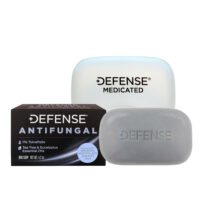The human skin
Our skin is a vast immunological organ system that encases the entire body. What most people don't realize is that it's comprised not only of the skin but the hair, scalp, and nails. There are thousands of pathogens that can impact the human skin. One of the most import roles the skin plays in avoiding skin infections is to act as a barricade to these outside pathogens. These invaders can be in the form of bacteria, fungus, or viruses.
The average person's skin weighs almost nine pounds and is comprised of three separate layers: the epidermis, dermis, and subcutaneous tissue. There are two major kinds of human skin: glabrous skin, the non-hairy skin on the palms and soles, and hair-bearing skin. Within the last cited variety, the hairs are organized each with hair follicle, sebaceous gland, and an affiliated arrector pili muscle.
Bacterial Skin Infections
The skin is a natural host for thousands of bacterial species. These bacteria create colonies on the skin and for the most part are considered part of the normal, healthy skin flora. Staphylococcus aureus and Streptococcus pyogenes are not frequent visitors to the skin's flora, but they can survive without necessarily causing an outbreak. Overexposing the skin to pollution, natural trauma, pre-existing skin illnesses, and poor hygiene can contribute to the weakening of healthy skin flora allowing offensive bacteria to increase - resulting in a significant disruption. For the athlete, skin-to-skin contact (including hair) with an infected individual or surface can cause skin infections to occur as well.
Fungal Skin Infections
Fungi can cause many kinds of skin infections. Fungal infections are persistent. The invading fungal spore prefers damp places on the human body, although they are reasonably capable of infecting any part of the skin. Some common skin infections caused by fungus are athlete's foot, jock itch, ringworm, and yeast infections. Typical symptoms include persistent itching sensations, flaking of the skin, and eruptions on the skin. Without proper care, they can become tough to clear up.
Viral infections
Outbreaks of viral infections, Herpes simplex virus (HSV) being one of the most common, occur once the virus gains a direct foothold at mucosal coverings or on locations where the skin is abraded. After the main implantation, the virus then travels to the adjacent dorsal ganglia. There it stays dormant if not reactivated by psychological stress, physical strain, or even sunlight.
